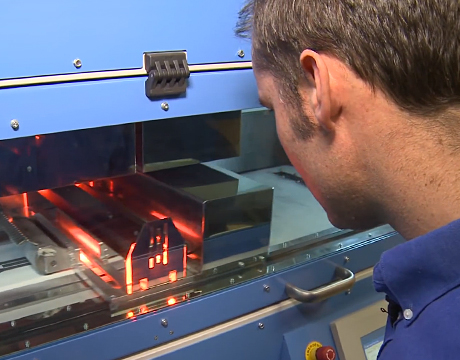Global consulting giant PwC has produced a study that shows 3D printing is finally coming of age and becoming a viable solution for mass manufacturing.
The industry has come on in leaps and bounds in recent years and PwC has produced two reports in two years, with markedly different results. Rough rapid prototypes have given way to finished products and industry as a whole is waking up to this disruptive technology.
Spending on the increase
Global spending on printers increased to $11 billion in 2015 and that is set to increase to $27 billion in 2019. The consulting group predicts an explosion in the home printing market, so consumers will form a large part of this growth.
But as the printers get faster and produce better results and industrial processes make better uses of ceramics, metals and even the likes of Graphene, it could well take over as the primary production method in big business, too.
The speed of progression in 3D printing has been astounding. 71.1% of US manufacturing companies now use 3D printing in some way, with 31.4% adopting it for rapid prototyping. The study showed that 42% of manufacturers expect to use 3D printing for mass manufacturing in the next 3-5 years, but just 6.6% are using it to produce end products right now.
So much more to come
That means we have barely scratched the surface and we are set for serious progress in the coming years. There are all kinds of applications that we just hadn’t considered, too. When a machine is rendered obsolete, securing parts for them can be an arduous task. With a 3D printer on the premises, companies can continue to service older machines and that could save you money, effort and extend the life of a product. This is all good news.
Our understanding of how the 3D print process will affect business is starting to flourish, too, with businesses now realising that it won’t just affect the supply chain. 22% still believe that restructuring the supply chain will be the most significant change, while 18% now say it will change their relationship with customers.
22% have become concerned with the ease with which their intellectual property can be copied and this is a very real issue that we will have to face at some point.
Cost, concerns about their ability to exploit the technology and quality are the main barriers to entry into 3D printing as a production process right now.
When to pull the trigger?
3D printers are advancing at such a rate that it’s understandable that companies might want to wait for the technology to mature before ploughing huge resources into a 3D printed manufacturing line. There is no easy answer to this as we’re at the start of a development curve and, as with home computers, the equipment is likely to be obsolete almost as soon as it hits the factory floor.
This adds significantly to the overall cost equation, but once the quality of the 3D printers matches current production levels then it may well tip the equation back in additive printing’s favour and at that point the manufacturers will finally decide to jump.
41.3% of manufacturers believe they simply don’t have the talent on board to exploit the technology to its fullest, but this is a relatively simple problem to fix and they’re a recruitment drive away from the solution.
The future is bright for 3D printing
There is no doubt that most major manufacturers, from clothing companies to aerospace suppliers, are now considering how to incorporate 3D printing in to their workflow. It has gone from a curiosity just a few years ago to an absolute necessity within a few years.
When PwC revisit this in another two years, would you bet against them finding a different landscape dominated by 3D printing?




